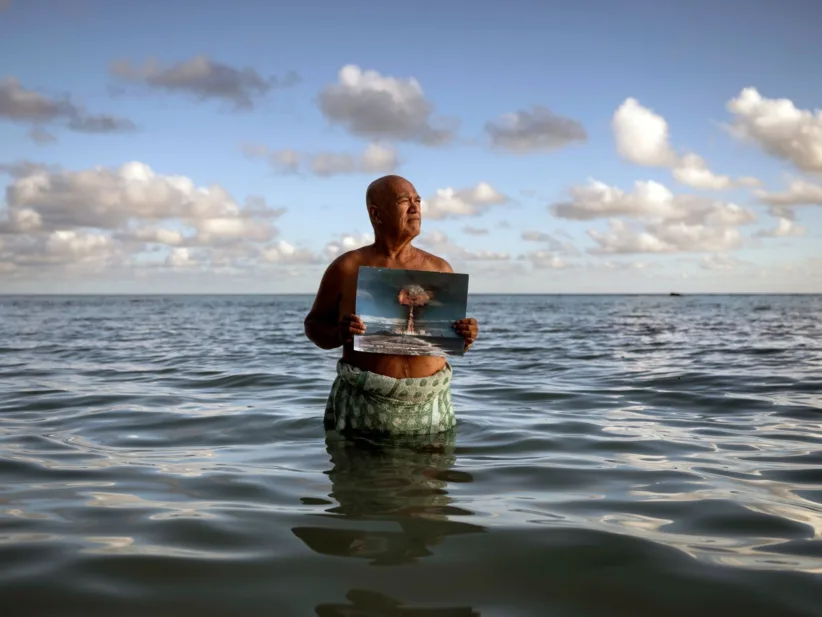The obligation to assist victims and remediate affected territory
Although concrete progress has been slow to occur, states parties and civil society again met frequently in 2024 to advance implementation of the obligations in Article 6 of the Treaty on the prohibition of nuclear weapons’ (TPNW) obligations to provide assistance to individuals affected by nuclear-weapons use and testing and to remediate contaminated environments. The informal working group on victim assistance, environmental remediation, and international cooperation and assistance convened five times in 2024.

From 1945 to 2017, more than 2,000 nuclear weapons were used or tested on the territories of what is today 16 states, leaving a devastating and lasting legacy. The TPNW is the first international legal instrument that seeks to address the harm caused to people and places by decades of nuclear weapons use and testing.
At the TPNW’s Second Meeting of States Parties in November–December 2023 (2MSP), states parties reaffirmed their support for addressing the harms of nuclear weapons use and testing. They also decided to extend the informal working group on victim assistance, environmental remediation, and international cooperation and assistance created at the First Meeting of States Parties in 2022 (1MSP) into the next intersessional period through to the Third Meeting of States Parties during the week of 3 March 2025 (3MSP). The working group is co-chaired by two TPNW states parties where nuclear weapons were tested: Kazakhstan and Kiribati.The 2MSP also adopted, on a provisional basis and for voluntary use by the states parties, a reporting format and reporting guidelines on victim assistance, environmental remediation, and international cooperation and assistance. It was recommended that the states parties continue to review the reporting format and guidelines with a view to further improve them. Another decision concerned the creation of an international trust fund for victim assistance and environmental remediation.
For more information, see the 2024 edition of the Nuclear Weapons Ban Monitor.
ARTICLE 6 - INTERPRETATION
- To address the ongoing suffering inflicted by the use and testing of nuclear weapons, Article 6(1) of the TPNW obligates each state party to provide ‘adequate’ assistance to individuals under its jurisdiction who are affected by the use or testing of nuclear weapons. Article 6(2) obligates states parties to take ‘necessary and appropriate measures’ towards the remediation of any areas in territory under their jurisdiction or control that have been contaminated as a result of activities related to the testing or use of nuclear weapons or other nuclear explosive devices.
- Article 6 should be read in tandem with Article 7 which requires all states parties to cooperate on implementation of the Treaty, and all states parties in a position to do so to ‘provide technical, material and financial assistance’ to affected states parties, which will help them fulfil their victim assistance and environmental remediation obligations.
ARTICLE 6(1) - VICTIM ASSISTANCE
- It is not required that the harm be caused by the state under whose jurisdiction they fall or that it occurred within that territory.
- Assistance includes, but is not limited to, medical care, rehabilitation, and psychological support, as well as support for social and economic inclusion.
- Assistance under Article 6(1) must be provided in accordance with applicable international human rights and humanitarian law. The paragraph requires that assistance in all cases must be age- and gender-sensitive and provided to all on the basis of need ‘without discrimination’. The duty of non-discrimination ensures that states parties do not adversely distinguish among recipients based on the basis of sex, race, religion, sexual orientation, disability, political opinion, or other status identified in international human rights law. (See: Art. 2(1), International Covenant on Civil and Political Rights, and Art. 5(2), Convention on the Rights of Persons with Disabilities, as well as the disarmament law precedent in Art. 5(2)(e), Convention on Cluster Munitions.)
- Because addressing the human impacts of nuclear weapons is a complex and long-term humanitarian task, the TPNW facilitates the process by creating a framework of shared responsibility for victim assistance (as well as environmental remediation, discussed in the next section). The framework enables those who are willing to start addressing these issues to act together now. Affected states parties bear the primary responsibility for implementation as this protects their sovereignty and follows the precedent of international human rights law and humanitarian disarmament law. But other states parties in a position to do so are required to provide international cooperation and assistance to help affected states parties meet their victim assistance (and environmental remediation) obligations.
- To make victim assistance more manageable, Article 6(1) can also be understood to allow affected states parties to realise some of their obligations, particularly those related to economic, social, and cultural rights, progressively. International human rights law requires a state to take steps to achieve those rights ‘to the maximum of its available resources’, while recognising that full realisation may be a gradual process. (See: Art. 2(1), International Covenant on Economic, Social and Cultural Rights.)
ARTICLE 6(2) - ENVIRONMENTAL REMEDIATION
- Given that nuclear fallout causes significant levels of contamination that spread across time and space, the TPNW recognises that environmental remediation is a long-term commitment. It is typically difficult, and often impossible, to return areas affected by nuclear weapons to their pre-detonation condition. Accordingly, Article 6(2) stipulates that affected states parties must take ‘necessary and appropriate measures towards the environmental remediation of [contaminated] areas’. Although they may never achieve complete remediation, they must work in good faith towards that goal.
- Certain interim activities, such as risk education, marking of contaminated areas, and national planning, can be accomplished in the near term. An essential step in each case is for a state party to conduct an environmental remediation needs assessment.
ARTICLE 6(3)
- Article 6(3) makes clear that the TPNW’s victim assistance and environmental remediation obligations do not preclude affected states parties or individuals from seeking redress or assistance through other means, such as judicial measures or bilateral treaties with states not party.